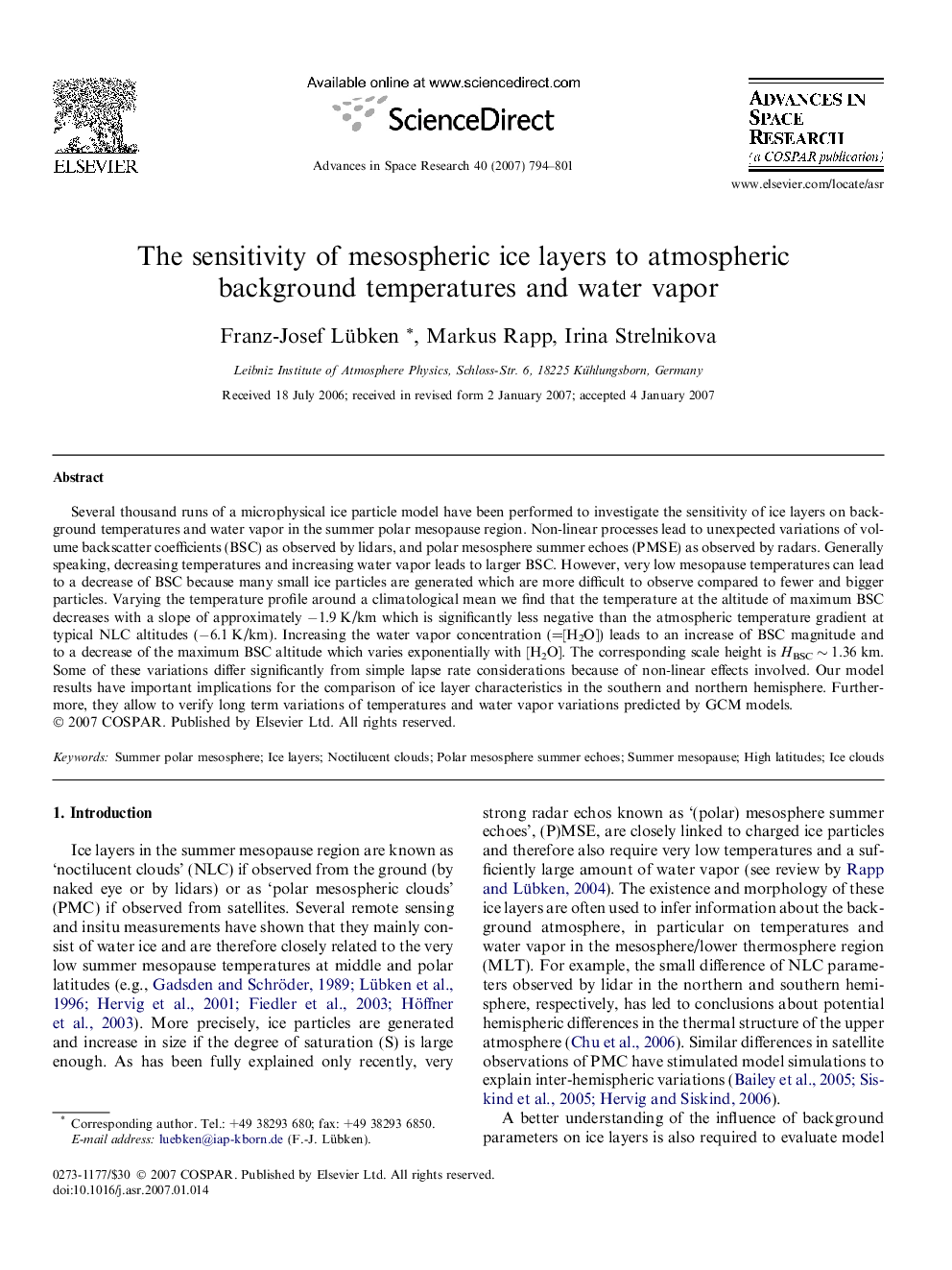| Article ID | Journal | Published Year | Pages | File Type |
|---|---|---|---|---|
| 1768877 | Advances in Space Research | 2007 | 8 Pages |
Several thousand runs of a microphysical ice particle model have been performed to investigate the sensitivity of ice layers on background temperatures and water vapor in the summer polar mesopause region. Non-linear processes lead to unexpected variations of volume backscatter coefficients (BSC) as observed by lidars, and polar mesosphere summer echoes (PMSE) as observed by radars. Generally speaking, decreasing temperatures and increasing water vapor leads to larger BSC. However, very low mesopause temperatures can lead to a decrease of BSC because many small ice particles are generated which are more difficult to observe compared to fewer and bigger particles. Varying the temperature profile around a climatological mean we find that the temperature at the altitude of maximum BSC decreases with a slope of approximately −1.9 K/km which is significantly less negative than the atmospheric temperature gradient at typical NLC altitudes (−6.1 K/km). Increasing the water vapor concentration (=[H2O]) leads to an increase of BSC magnitude and to a decrease of the maximum BSC altitude which varies exponentially with [H2O]. The corresponding scale height is HBSC ∼ 1.36 km. Some of these variations differ significantly from simple lapse rate considerations because of non-linear effects involved. Our model results have important implications for the comparison of ice layer characteristics in the southern and northern hemisphere. Furthermore, they allow to verify long term variations of temperatures and water vapor variations predicted by GCM models.
